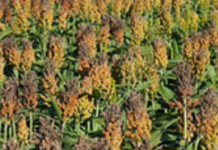Type the word gluten—the protein found in wheat, barley and rye—into any internet search engine and the first web page that pops up is the Celiac Disease Foundation and questions such as What does gluten do to your body and what is gluten and why is it harmful.
Gluten has been labeled unhealthy or even dangerous over the last decade, however, it does not deserve this bad rap. While gluten is damaging to those who have celiac disease—an autoimmune disease that only 1% of the world population suffers from—for the other 99% of the world gluten is safe and provides fiber and nutrients.
Additionally, the American Heart Association published data in 2017 that concluded people who ate foods containing higher amounts of gluten were at lower risk of diabetes than those that did not and the Harvard School of Public Health released data from one of it studies that found the individuals who ate high-gluten diets were at decreased risk of health disease compared to other participants that ate low-gluten diets. What’s more, there is just no substitute that can equal the taste and texture of a perfectly baked pizza crust or flaky, buttery biscuit made with wheat flour. The summary for those consumers—gluten is healthy, natural and absolutely delicious.
In fact, Oklahoma State University Wheat Genetics Chair Brett Carver has been working tirelessly to develop new wheat varieties through OSU’s Wheat Improvement Team that have better gluten strength to produce higher quality bread products, while maintaining elevated yields and disease resistance. This combination could be a winner as many bread products need extra gluten added to the dough during the baking process to increase the gluten strength. These new varieties will not need additional gluten, adding value to the wheat and flour produced from it.
“Simply stated, a truly unique combination of wheat quality in a high-performance wheat variety provides value-capturing opportunities to farmers, millers, and bakers, as long as the genetics are maintained and delivered throughout the supply chain in its purest form,” Carver explained. “And, consumers will see value through a cleaner label on various wheat food products.”
Carver said the team currently has about a dozen candidates they have been studying. He plans to sort through all of the data collected during the 2021-22 crop season and combine that with data from the past four to six previous seasons. Several varieties will be selected to be released over the next two seasons—starting in fall 2022.
“The bar we normally set for gluten strength and overall dough quality places OSU varieties in a position of desirability among the millers and bakers,” Carver explained. “Some of the candidates, three to be exact, exhibit a level of gluten strength currently not present in any commercially available Hard Red Winter or Hard White wheat varieties. That is a higher bar than normal for us, but now that we know how high the bar can go, we will attempt to repeat this level of success in near-term releases, possibly over the next five years.”
Carver said OSU’s new line of wheat varieties were born from crossing the university’s popular Gallagher variety—known for its early maturity, disease resistance and exceptional forage yield—by Snowmass, a variety developed by Colorado State University.
“We chose Snowmass because it was confirmed to possess a novel, but naturally occurring glutenin subunit labeled Bx7oe,” Carver explained. “Snowmass’s agronomic performance was desirable in parts of Oklahoma, particularly in the far western regions. We considered Snowmass to be the most effective carrier of Bx7oe that would impose minimal decline to productivity in Oklahoma. Gallagher was one of four ‘recipient’ non-Bx7oe varieties considered to provide wide adaptation and above-average dough quality, and thus a suitable genetic background to deploy the gene conferring Bx7oe presence. Our intent was to squeeze as much yield potential out of the Gallagher background while maintaining the unusual level of gluten strength.”
A variety currently called “OK15MASBx7 ARS 8-29” was born from this crossing of Gallagher and Snowmass and is expected to have even higher yield than Gallagher with the increased gluten properties. Carver feels confident he has reached his goals with 8-29, but has made more advancements with four other derivatives of 8-29 that are being considered for release. He also said another recipient, an experimental line named OK10130, produced another super-strong gluten progeny called 6-8, that may be licensed and marketed alongside the 8-29 variety.
Carver said these new varieties have been in the works for about 10 to 11 years from the initial crossing stage to release. He said the first major challenge was that progenies confirmed by genetic markers to have the novel Bx7oe subunit did not necessarily result in added gluten strength.
“Once novel strength was thought to exist, more parties became involved in the quality testing phase to validate the level and utility of gluten strength,” he said. “For that, we relied on quality labs in the public and private sectors, and the results were not always consistent, and thus it took more tests to select the truly best genetic combinations. This level of quality testing was uncharted territory for us, even with the emphasis we traditionally place on wheat quality.”
After more than a decade, Carver is excited to introduce these new varieties to producers over the next few years and bring additional value to the wheat grown in Oklahoma and surrounding states.
“What really brings satisfaction to me is to show unending versatility of the Hard Red Winter wheat class, that with relatively small tweaks in the genetics can produce extremely surprising and valuable results to those who produce and process it,” Carver said. “We need more research in wheat molecular genetics to help us make those tweaks more efficiently.”
As for future wheat breeding developments, Carver plans to continue his streak of improved varieties that perform well in the High Plains environment.
“The next breeding cycle has already produced progenies of the 8-29 and 6-8 varieties, in which we will attempt to identify the same exceptional gluten strength combined with even higher yielding capability, and perhaps with other surprises added in for special effect,” he explained. “We can now expect that from Hard Red Winter wheat, a traditional U.S. wheat class with untraditional capability from farm to table.”
As reported in the High Plains Journal.




